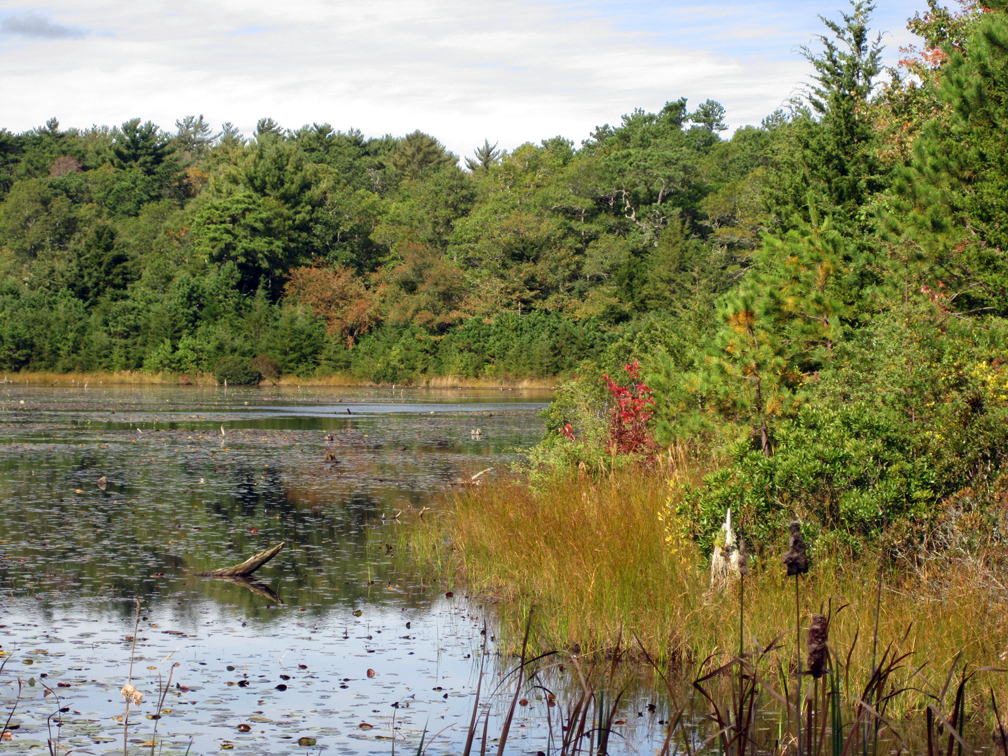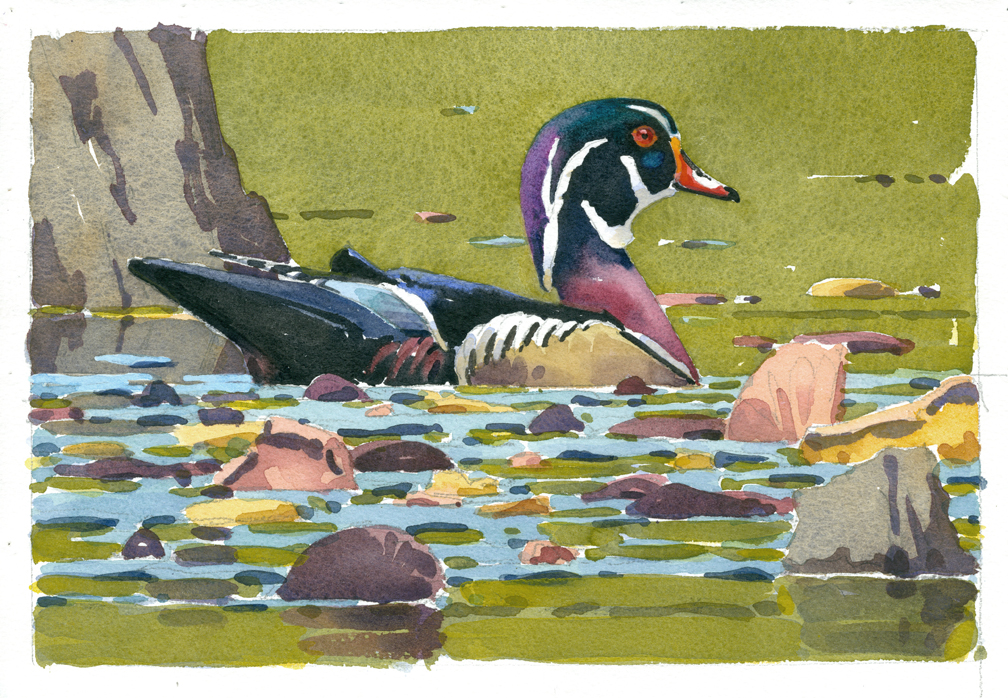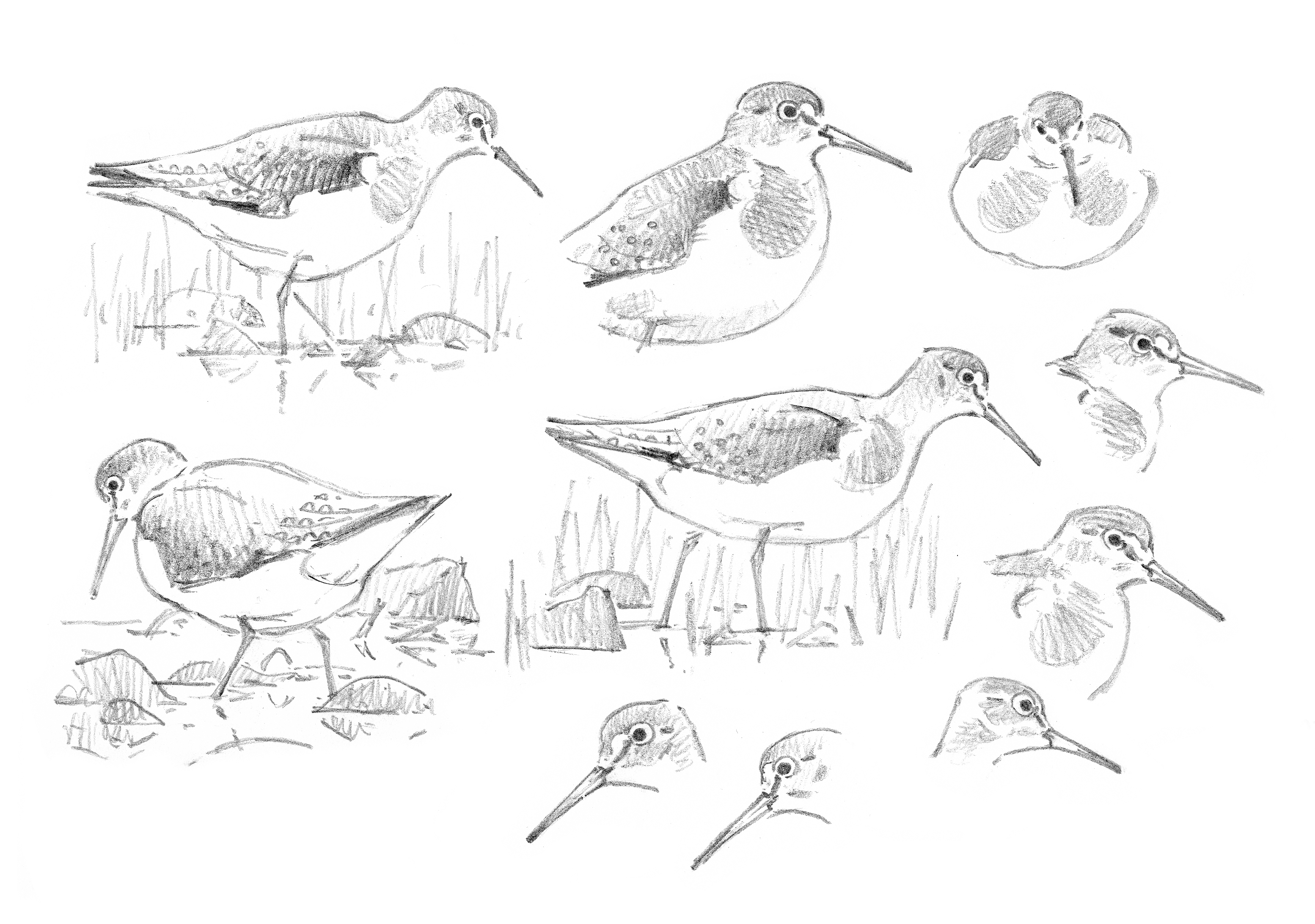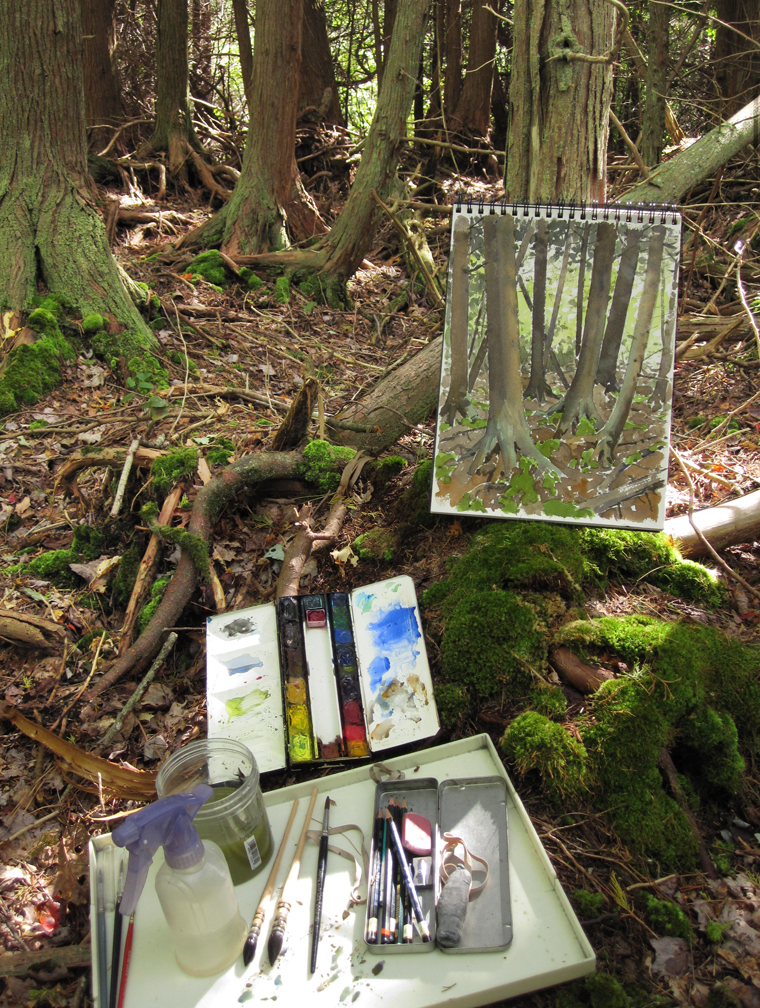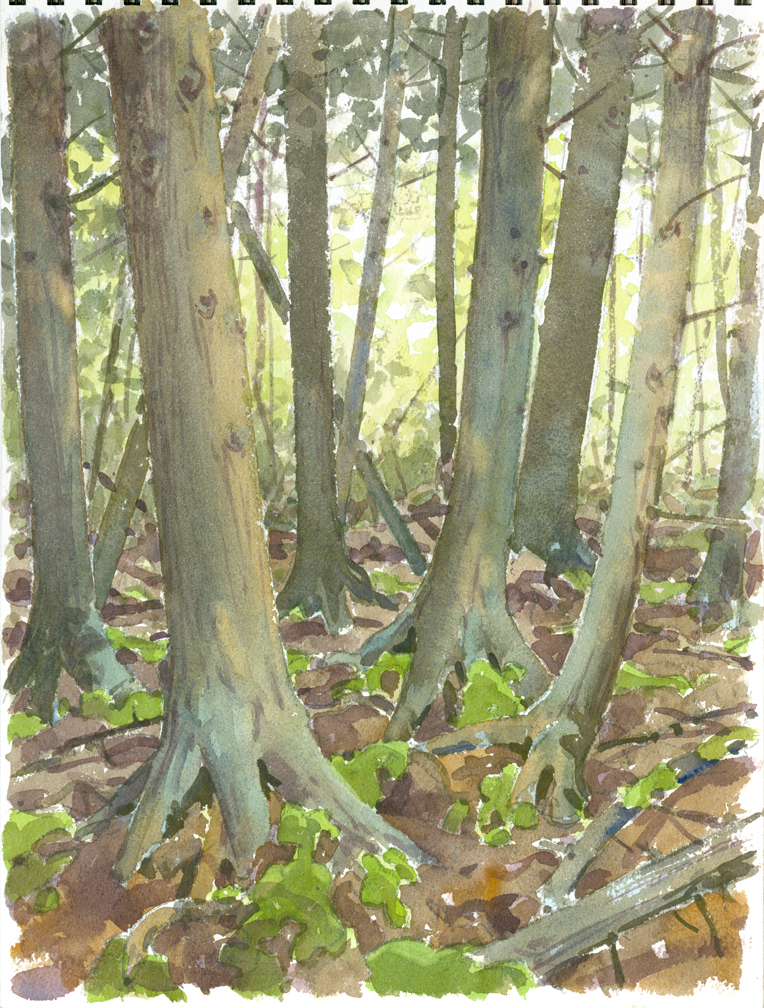This is from a series of posts by MABA resident artist Barry Van Dusen
December 1, 2015
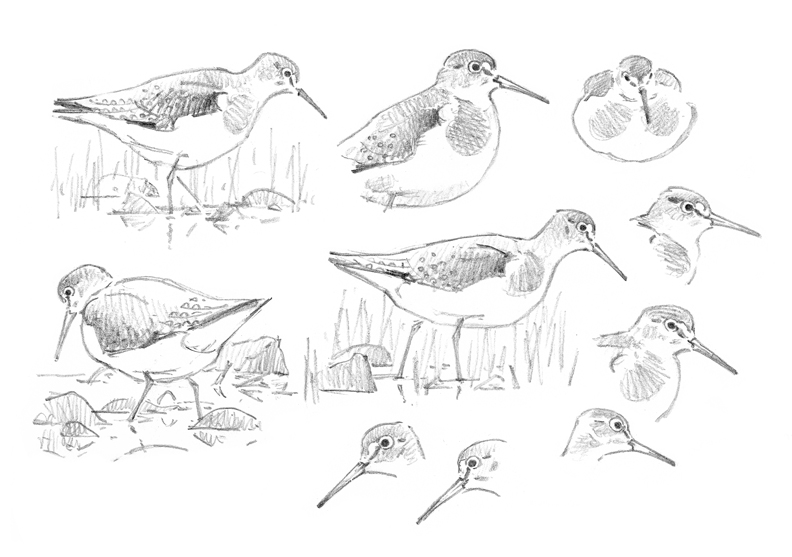
solitary sandpiper field sketches, pencil, 9″ x 12″
After every sanctuary visit, my head is filled with images and impressions, especially in the first few days afterwards. But as time passes, certain impressions are more persistent than others, and linger for days, even weeks. The solitary sandpipers foraging on the grassy mudbars at Skunknett River (see “A Skunky Place for Eels”, Skunknett River Wildlife Sanctuary, Oct 11, 2015) is a case in point. Something about the way the soft round volumes of the birds related to the gentle greens of the grass kept nagging at me, and I knew I needed to explore the impression in paint. (The winter months are a good time for developing these lingering impressions in the studio.)
I keep what I call “studio sketchbooks” on hand for exploring these types of ideas. The drawings in these books are NOT field drawings. They are, instead, explorations of picture ideas. Getting something down on paper focuses my thoughts and intentions.
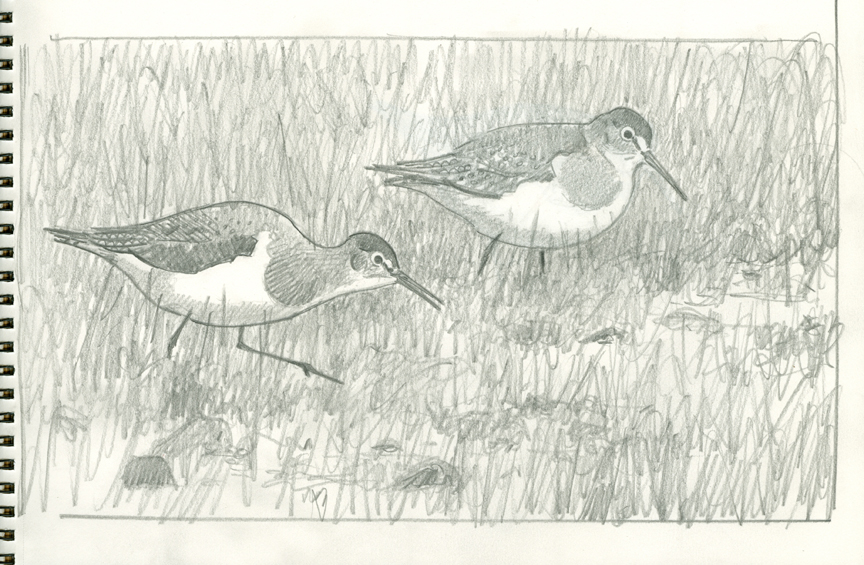
concept sketch of solitary sandpipers, pencil, 9″ x 12″
Using the sketches made at Skunknett, I first tried a scene with two birds, one passive and one active. Somehow, it didn’t match the vision in my mind. Examining some rather poor photos taken through my scope at Skunknett, I realized that what most interested me was the way the soft, round volume of the bird seemed to merge with the grasses, and all the tonal transitions were subtle and soft.
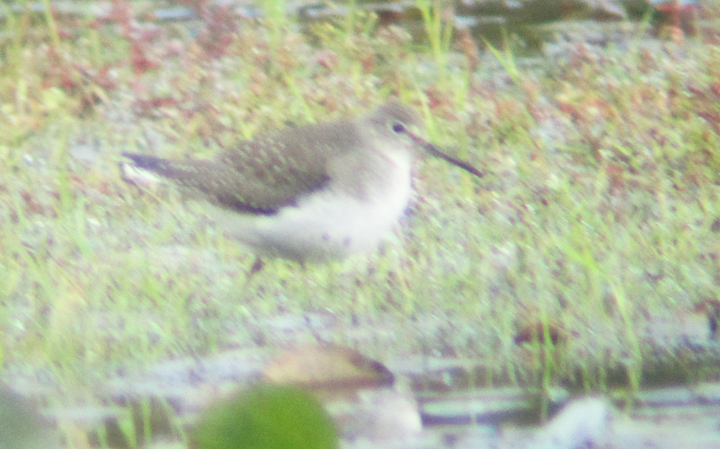
photo taken through scope at Skunknett River Wildlife Sanctuary
Making another pencil sketch with just one bird, I adjusted the tones to get the softer feeling I was after. Now, I seemed to be getting closer to my original impression.
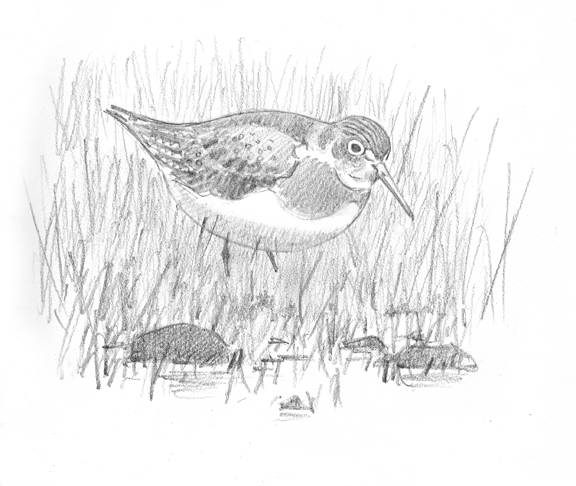
Concept sketch of solitary sandpiper, pencil, 7″ x 9″
I started my watercolor with two simple washes on a wet sheet- establishing the tone of the bird’s belly shadow and the green grass, and letting them merge slightly on the wet paper. These two washes established the tone and mood, and all subsequent washes were keyed to them.
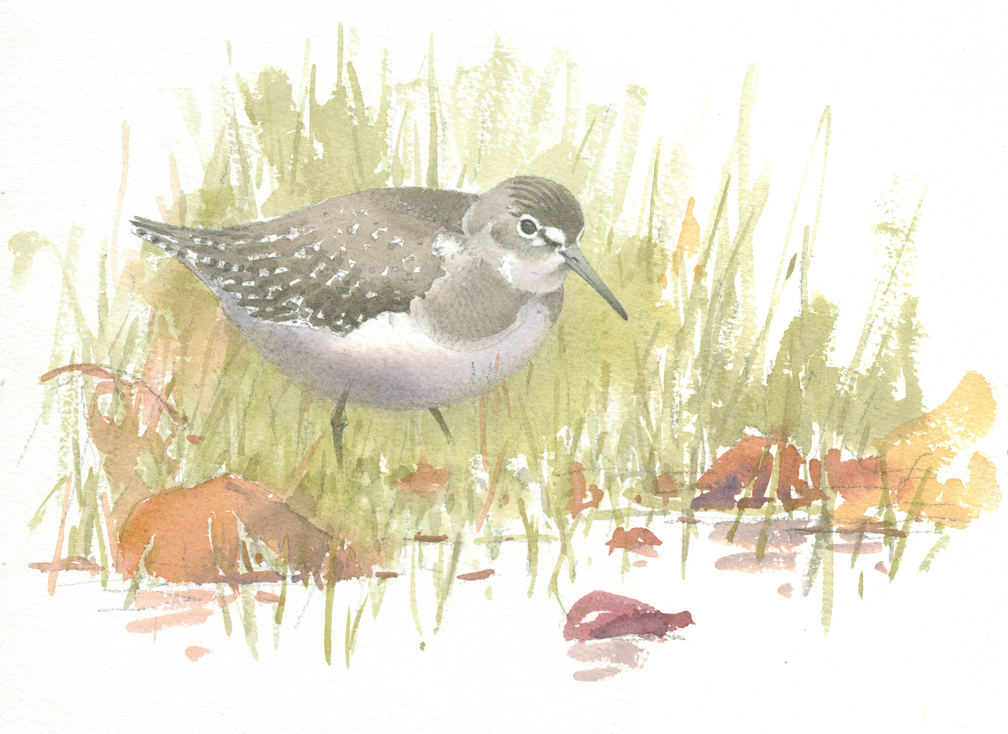
Solitary Sandpiper at Skunknett River, watercolor on Arches rough, 9″ x 12.25″


